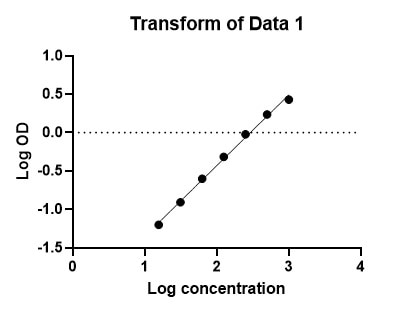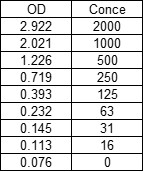Mouse Proprotein Convertase 9 DuoSet ELISA Summary
* Provided that the recommended microplates, buffers, diluents, substrates and solutions are used, and the assay is run as summarized in the Assay Procedure provided.
Product Features
- Optimized capture and detection antibody pairings with recommended concentrations save lengthy development time
- Development protocols are provided to guide further assay optimization
- Assay can be customized to your specific needs
- Economical alternative to complete kits
Kit Content
- Capture Antibody
- Detection Antibody
- Recombinant Standard
- Streptavidin conjugated to horseradish-peroxidase (Streptavidin-HRP)
Other Reagents Required
PBS: (Catalog # DY006), or 137 mM NaCl, 2.7 mM KCl, 8.1 mM Na2HPO4, 1.5 mM KH2PO4, pH 7.2 - 7.4, 0.2 µm filtered
Wash Buffer: (Catalog # WA126), or equivalent
Reagent Diluent*
Blocking Buffer*
Substrate Solution: 1:1 mixture of Color Reagent A (H2O2) and Color Reagent B (Tetramethylbenzidine) (Catalog # DY999)
Stop Solution: 2 N H2SO4 (Catalog # DY994)
Microplates: R&D Systems (Catalog # DY990), or equivalent
Plate Sealers: ELISA Plate Sealers (Catalog # DY992), or equivalent
*For the Reagent Diluent and Blocking Buffer recommended for a specific DuoSet ELISA Development Kit, please see the product
Scientific Data
Product Datasheets
Preparation and Storage
Background: Proprotein Convertase 9/PCSK9
PCSK9 (proprotein convertase subtilisin kexin 9), also called proprotein convertase 9 or NARC-1 (neural apoptosis-regulated convertase 1), is a member of the proteinase K subfamily of subtilisinrelated serine endoproteases. Mouse PCSK9 cDNA encodes 694 amino acids, including a signal peptide, a prodomain, and a catalytic domain. PCSK9 is highly expressed in the liver, intestine, and kidney. It is initially synthesized as a soluble 74 kDa precursor protein. In the endoplasmic reticulum, it undergoes autocatalytic intramolecular cleavage to generate a 14 kDa prodomain and a 60 kDa catalytic domain. While within the secretion pathway, the prodomain remains associated and functions as a chaperone for the catalytic domain (1-4). During secretion, a portion of active PCSK9 may undergo additional N-terminal proteolysis by furin or proprotein convertase 5/6A, creating an inactive 53 kDa form (5). This cleavage site is conserved between mouse and human or rat PCSK9, which share 78% or 93% amino acid sequence identity, respectively. While the 60 kDa protein is the major form, its ratio with the 53 kDa forms is variable in humans (5, 6).
Citations for Mouse Proprotein Convertase 9 DuoSet ELISA
R&D Systems personnel manually curate a database that contains references using R&D Systems products. The data collected includes not only links to publications in PubMed, but also provides information about sample types, species, and experimental conditions.
2
Citations: Showing 1 - 2
Filter your results:
Filter by:
-
Deletion of NoxO1 limits atherosclerosis development in female mice
Authors: GK Buchmann, C Schürmann, T Warwick, MH Schulz, M Spaeth, OJ Müller, K Schröder, H Jo, N Weissmann, RP Brandes
Redox Biol, 2020-09-04;37(0):101713.
Species: Mouse
Sample Types: Serum
-
Effect of Porphyromonas gingivalis infection on post-transcriptional regulation of the low-density lipoprotein receptor in mice.
Authors: Miyazawa, Haruna, Tabeta, Koichi, Miyauchi, Sayuri, Aoki-Nonaka, Yukari, Domon, Hisanori, Honda, Tomoyuki, Nakajima, Takako, Yamazaki, Kazuhisa
Lipids Health Dis, 2012-09-19;11(0):121.
Species: Mouse
Sample Types: Serum
FAQs
No product specific FAQs exist for this product, however you may
View all ELISA FAQsReviews for Mouse Proprotein Convertase 9 DuoSet ELISA
Average Rating: 5 (Based on 2 Reviews)
Have you used Mouse Proprotein Convertase 9 DuoSet ELISA?
Submit a review and receive an Amazon gift card.
$25/€18/£15/$25CAN/¥75 Yuan/¥2500 Yen for a review with an image
$10/€7/£6/$10 CAD/¥70 Yuan/¥1110 Yen for a review without an image
Filter by:



